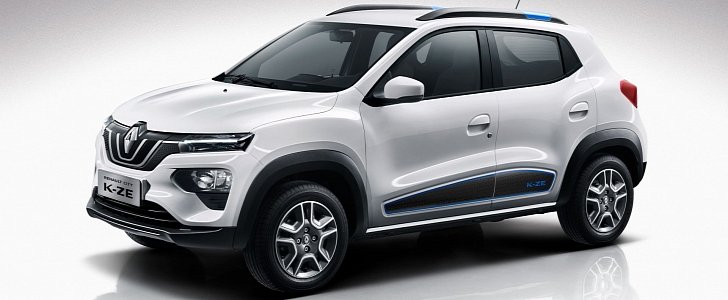A few days have barely passed since Groupe Renault released the financial results for 2019, confirming Dacia’s first-ever EV on slide 30 of the presentation. The French juggernaut followed up on that piece of information, confirming that a concept of the electric Dacia city car will head to Geneva next month.
“The most accessible 100-percent electric city car on the market” is how the series-production model is described. We still don’t know if the culprit is the size of the Renault Twingo or Zoe, yet there’s a third candidate to take into consideration. The rumor mill suggests that Renault could re-badge the City K-ZE crossover from China as a Dacia for European markets and the United Kingdom alike.
Whatever size and body still are in the pipeline, the yet-to-be-named model won’t wow you in terms of specifications. Designing the continent’s cheapest EV means that Dacia will resort to a small battery, one electric motor driving the front wheels with underwhelming output ratings, and hard plastic trim in the cabin.
Groupe Renault has also confirmed the Twingo Z.E. for the 2020 Geneva Motor Show, which will borrow the battery and drive unit from the smart EQ forfour. The official numbers aren’t available at the time of writing, but it’s easy to imagine what the A-segment urban dweller has to offer. From 17.6 kWh of battery capacity, look forward to 90 miles or thereabouts under WLTP driving conditions.
The B-segment Zoe Z.E. fares a little better, promising 242 miles from 52 kilowatt-hours. Renault doesn’t have an e-hatchback the size of the Nissan Leaf, which is rather curious given that the two automakers are alliance partners alongside Mitsubishi Motors. Dacia, meanwhile, is wholly owned by Renault.
Expected to be presented in series-production flavor next year, the Dacia EV is said to arrive at dealerships for the 2022 model year at the beginning of 2022 based on the slide mentioned earlier.













